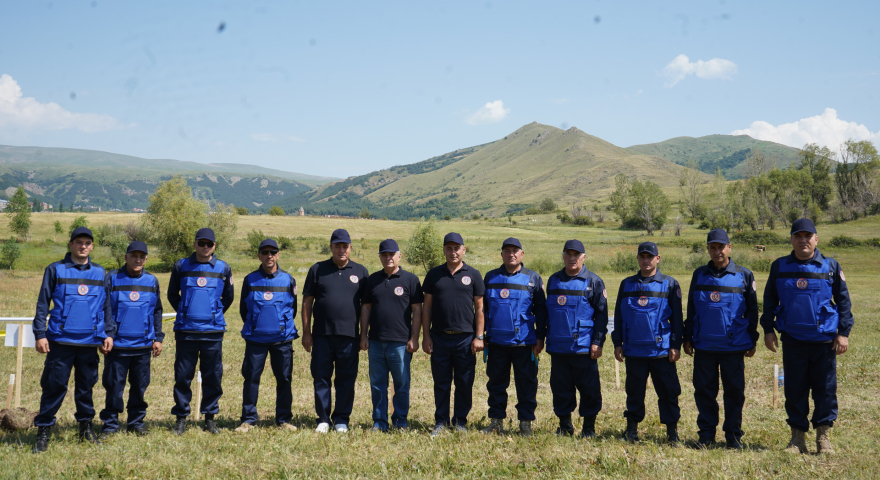
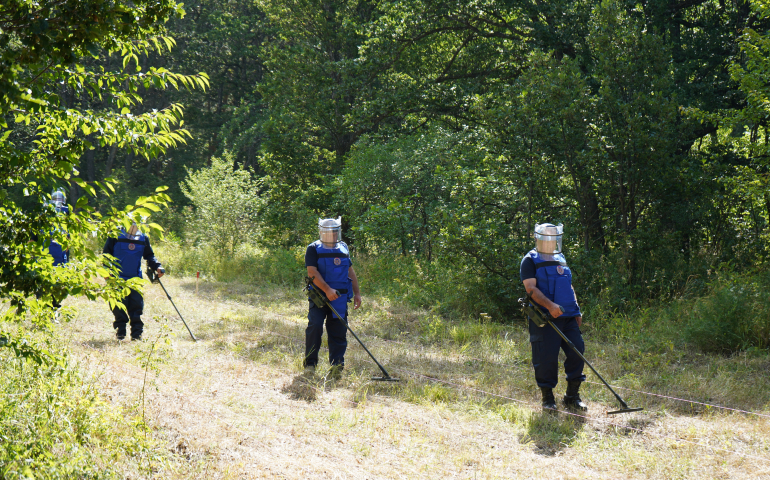
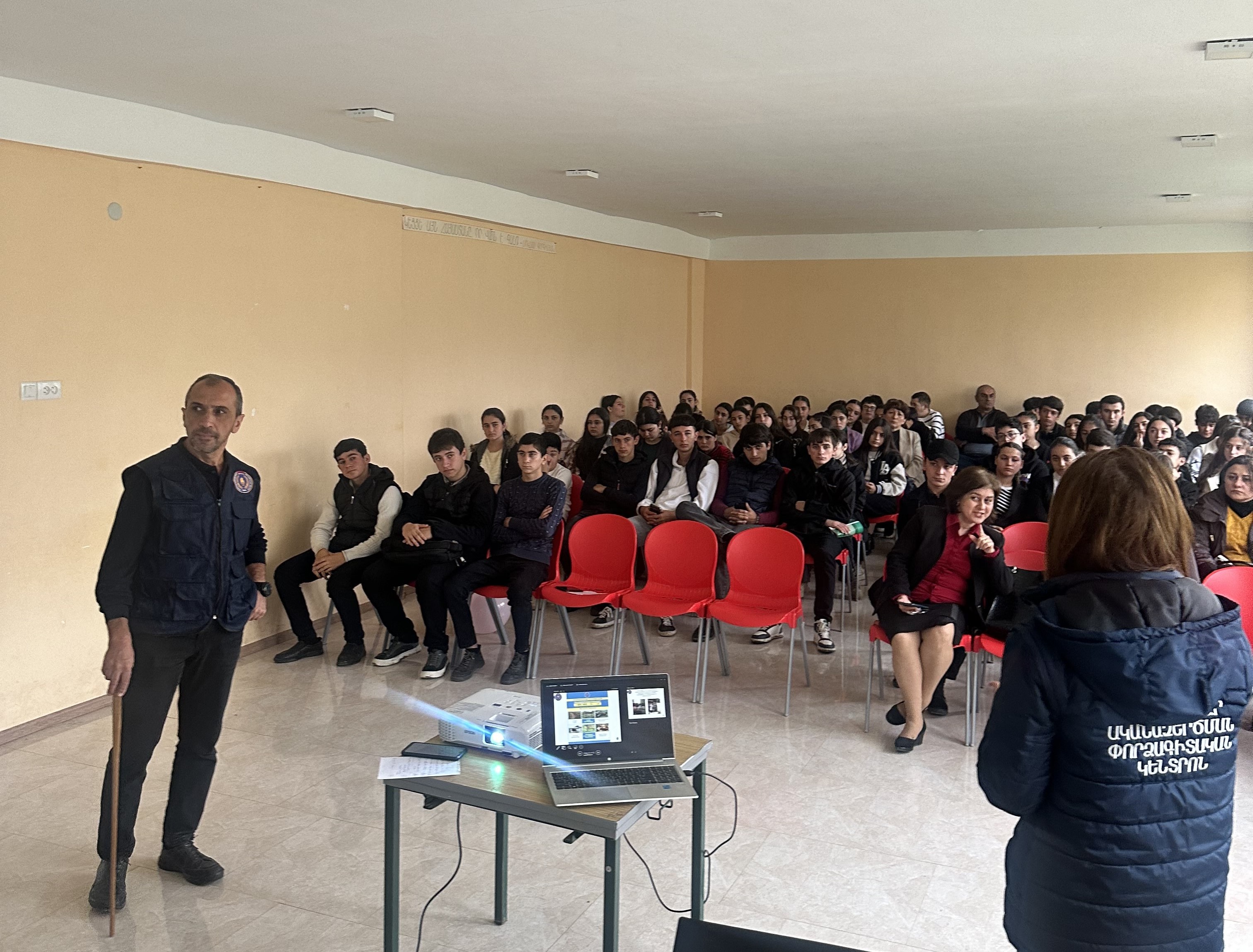
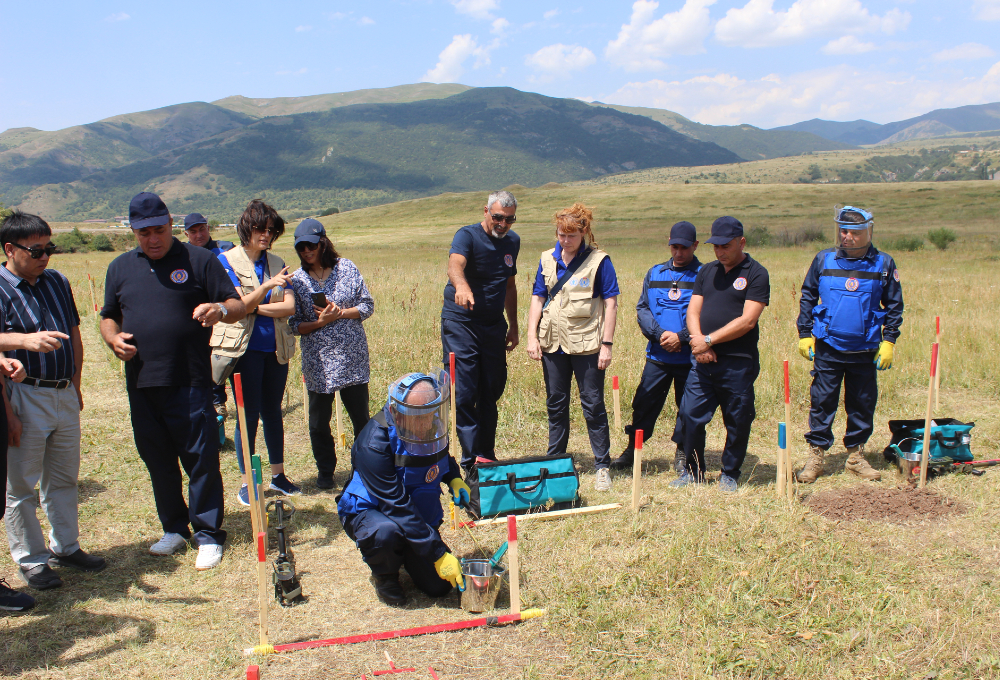
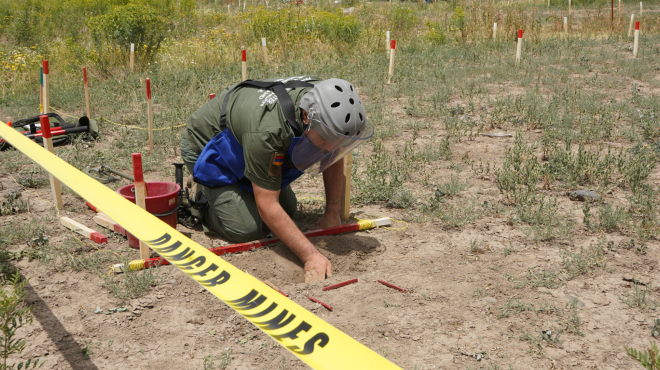
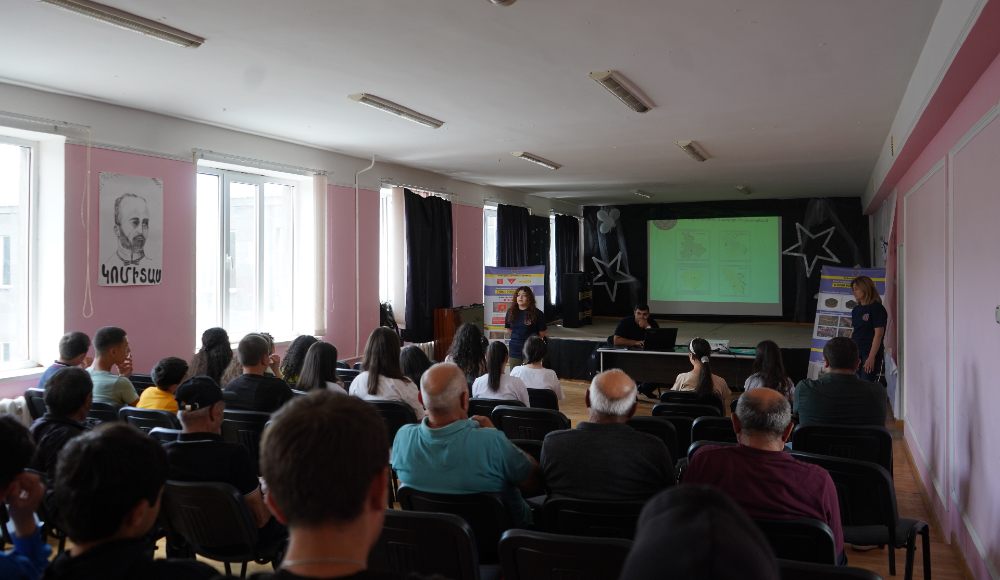
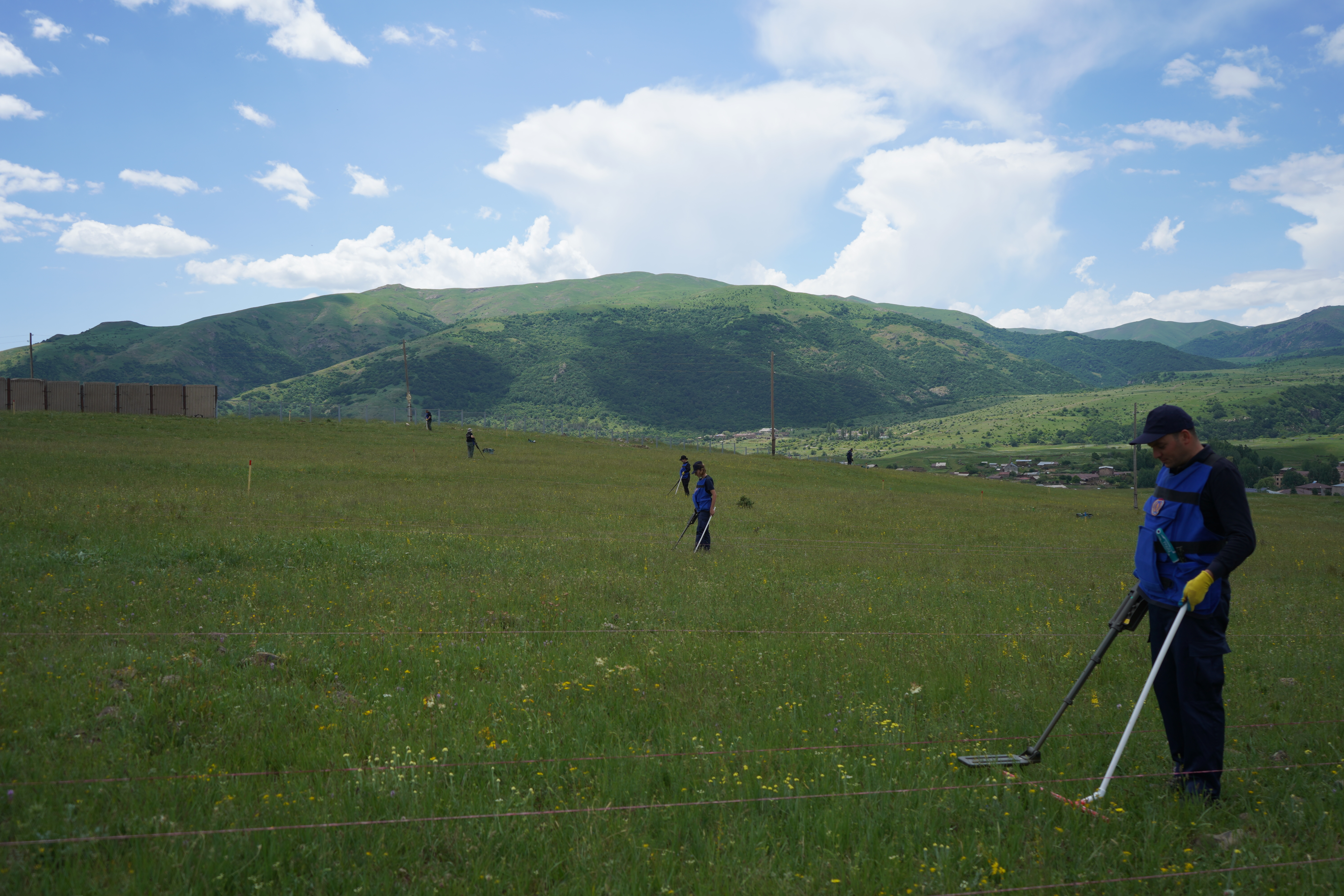
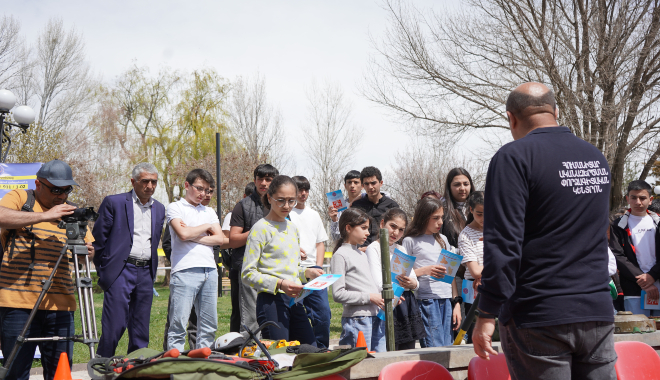
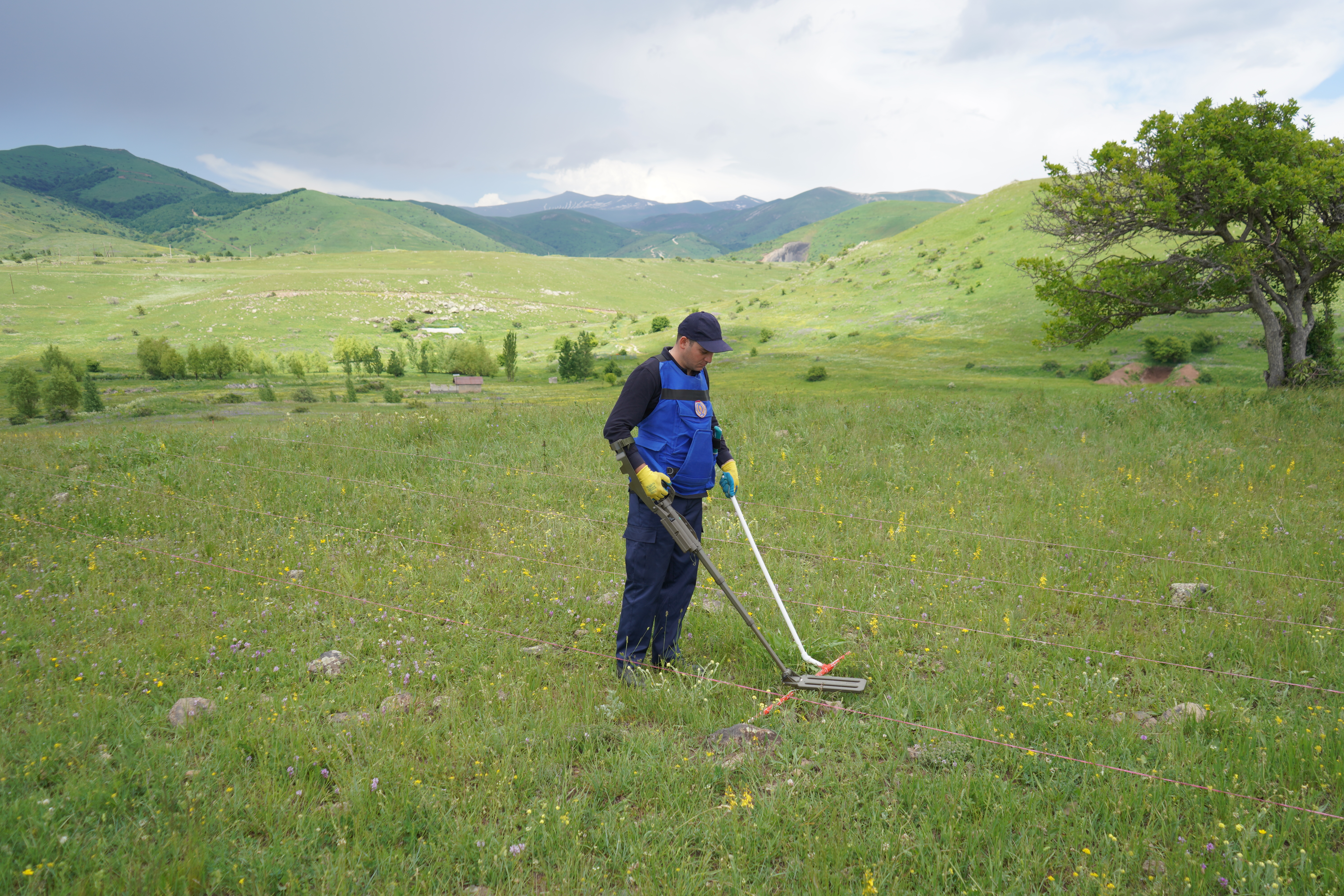











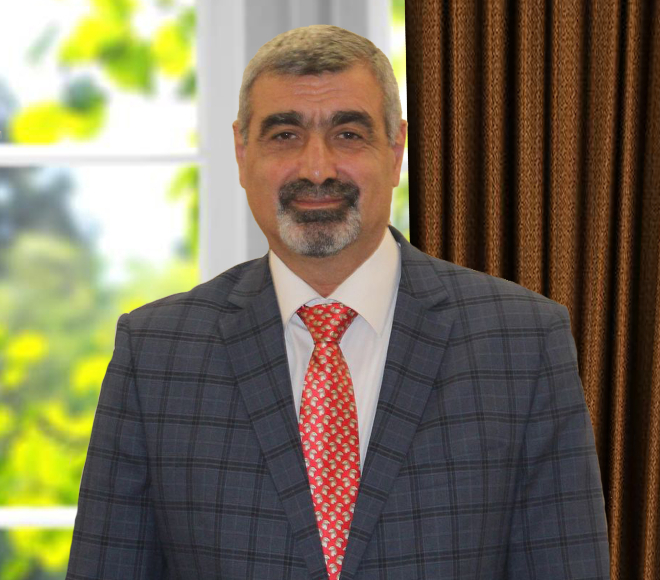
Mine and ERW contamination exists in many countries, including Armenia, which poses a threat to civilians and the future economic development of those countries.
The landmine problem in Armenia arose as a result of the long-term conflict with Azerbaijan and includes 4 out of 11 regions in Armenia. The contamination covers more than 42 000 000 m2 area, 805 victims are registered and there are more than 700 EO victims among the 120 000 Armenians forcibly displaced from Nagorno Karabakh in October 2023, who are in a socially vulnerable state.
The areas contaminated with anti-personnel and anti-tank mines, cluster munitions and other remnants of war present a threat to the residents of the country endangering their health, impeding the free movement, the construction of communications, the cultivation of lands, the implementation of various social and economic programmes in those areas, which in turn causes a chain reaction disrupting the sustainable development of the economy.
Moral and psychological problem also arises as a certain part of the victims become unable to work due to landmine injuries, they inadvertently become a "socially depressed stratum". Psychologically they see themselves as a “bother” for their families because of their inability to work. They need to be reintegrated into society. At the same time, mine victims need financial and economic support from the country. This, in fact, is an additional burden for any government.
Mine action is an important activity for the countries with contaminated areas. It is imperative to increase the efficiency of the mentioned work. It is essential to organize clearance and land release activities in a short period, to set targeted priorities of the areas to be cleared, to raise the level of awareness among the population and promote behavioural change, to carry out harmonious and interconnected activities for targeted and coordinated assistance to victims, to facilitate the implementation of various socio-economic programmes by the clearance process. Mine action cannot be exclusively just a professional function in narrow terms and operate on the principle of “clearance just for clearance”. It should operate in the context of socio-economic programmes, within the chain of social programmes implemented by the state, local self-governing authorities and international institutions.
The CHDE SNCO has been conducting research and studies on the above-mentioned issues for a long time in cooperation with UN Development Programme, World Food Programme and UNICEF. A number of pilot projects were jointly developed and implemented aiming to find the most optimal solutions to the mentioned issues. Currently mine action sector in Armenia works within a complex, but innovative landscape. It is not only about what we do but also how we and our partners translate the results of our joint work into long-term socio-economic and environmental benefits for communities and people by introduction of capacities, assets, new systems and experience. These include complex issues related to the sector, including priority setting, cooperation with public institutions, private sector, international entities, local and international NGOs, information collection and management, clearance operations, risk education and behavioural change, victim assistance, involvement of victims into the risk education process and thereby contributing to their reintegration into society, environmental protection, international cooperation, innovative approaches, the application of artificial intelligence in analysis and planning activities, etc. The process clearly outlines the roadmap that will enable to mitigate and in most cases to solve the problems caused by mines and ERW contamination with great efficiency and in a short period. Apparently, the programme implies CHDE’s coordinated work with international and local organizations that implement various social, economic and support programmes, as well as with local self-governing authorities of the contaminated regions so creating an informative-working base i.e. “network”. During this coordinated work the following is carried out in the prioritized communities (over time – all) as a result of complex planning of the activities from the cost-benefit perspective; final survey of contaminated areas, development of clearance activities and socio-economic programmes, clearance of contaminated areas from mines and ERW, handover of these areas to the communities with a “Green Label” certificate, implementation of socio-economic programmes, monitoring and analysis of overall activities including residual risks.
With this approach, the CHDE prioritizes defining mine/EO problem not only in narrow terms of the number of communities or the size of contaminated areas, but also in terms of mines/EO impact on people and communities. In other words CHDE emphasizes the importance to include in the scope its activities the assessments of social, economic, behavioral and environmental impacts on people and communities in the context of sustainable development, land release and environmental protection. This transformation not only leads to major improvements in the quality of mine action, but also facilitates the integration of mine action within the broader field of post-conflict recovery and development.
We call it “Greening Mine Action”. It consists of 3 stages and includes the following:
Stage 1․ Design a monitoring system of contaminated areas
• monitoring of contaminated areas – short term monitoring (pre-clearance) and long term monitoring (post-clearance)
• clearance of confirmed hazardous areas (technical survey, clearance and land release activities)
• explosive ordinance risk education among local population (by age group with a minimum period of 4 years)
Stage 2․ Assessment of socio-economic, behavioral and environmental impact
• socio-economic impact analysis
• identification of food security components
• assessment of behavioral change
• activities to eliminate mine/ERW impact on the environment.
Stage 3. Victim assistance
• monitoring of mine/EO victim data and updating the database,
• needs assessments and priority setting
• social reintegration of the victims
• assistance with the method of solving individual primary problems.
Since 2022, in the framework of the implementation of the afore-mentioned, the CHDE SNCO has implemented pilot projects in cooperation with a number of UN programmes in Davit Bek and Vorotan settlements, Syunik region, Sotk and Geghamasar settlements, Gegharkunik region, Jermuk and Kechut settlements, Vayots Dzor region. As a result, an analytical-operational program of the impact of contaminated areas on the socio-economic sphere has been created. Within that framework the following activities were implemented; clearance operations according to the "do no harm" principle by providing "Green Label", economic projects (irrigation system, greenhouse farming, grassland restoration etc.), risk education among population, introducing EORE into the school curricula and training of teachers, targeted social programs to support victims and their family members.
As a result of “Greening Mine Action” implementation, new links of cooperation are outlined and strengthened between international institutions and state and local self-governing authorities of the RA. Innovative approaches are used and the ground is prepared for the full and effective implementation of international humanitarian programmes in the RA.
To ensure its effective duration, great importance is attached to the dynamic and systematic development of the CHDE capacities. It also includes formal and informal learning, cooperation with international organizations, formation of a network partnership within the framework of organizing and implementing the activities. The Advisory Group established for these purposes made up from the representatives of national and international organizations, UN offices operating in Armenia, Geneva International Center for Humanitarian Demining (GICHD) and other organizations, supports the Center, gives consultation on the solution of the most important issues in the direction of application and introduction of tools and the latest technologies. The Advisory Group supports the CHDE and other stakeholders with non-binding strategic advice, professional experience, knowledge and contacts not readily available elsewhere.
The efforts of CHDE have already established green shoots of recovery through surveys and professional activities that serve as a basis for “Greening Mine Action” where “green = safety and development. The challenge is how these green shoots can be translated into long-term socio-economic and environmental benefits for people, communities and the country.
We can state that the program called “Greening Mine Action” performed in the chain of various economic programmes has a really great potential and can contribute to stable economic development of the country.
Director of the “Center for Humanitarian Demining and Expertise” SNCO Vaghinak Sargsyan